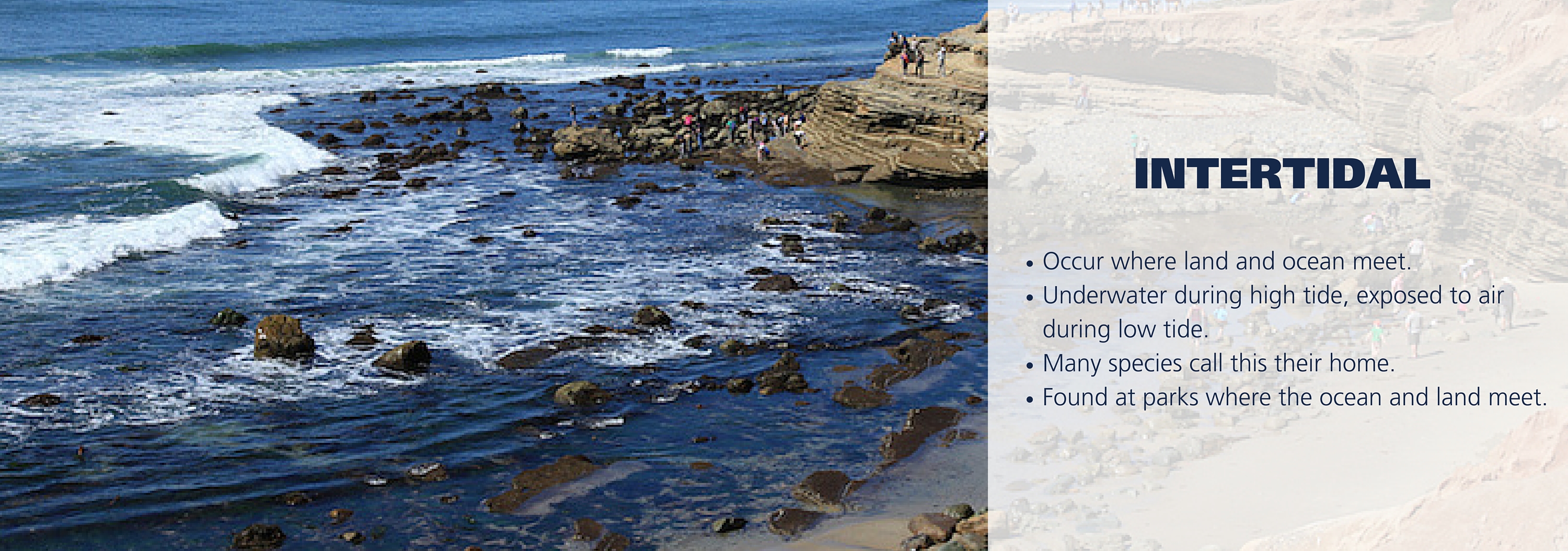Answer The Following Questions For My Marine Biology Class: 1.
Summary: The intertidal zone is a dynamic habitat where the ocean meets the shore, with varying levels of water, temperature, and wave force. It is found in rocky and sandy coastlines and is divided into several zones based on the level of inundation. These zones support unique species that are adapted to survive exposure to air and harsh wave conditions. The limited surface area in rocky intertidal zones leads to competition for resources and creates distinct habitats for different animals and plants.
-
Characteristics of the rocky intertidal zone: The rocky intertidal zone is a dynamic habitat that experiences drastic changes in water levels, temperature, and wave force due to the tides. It is found in rocky coastlines and supports diverse marine life adapted to survive exposure to air and harsh wave conditions. The limited surface area in rocky intertidal zones leads to competition for resources and creates distinct habitats for different animals and plants.
-
Abiotic and biotic factors in the rocky intertidal: Organisms and macroalgae in the rocky intertidal have to deal with abiotic factors such as wave shock, desiccation (drying out), temperature fluctuations, and salinity changes. Biotic factors include competition for space and resources, predation, and symbiotic relationships with other organisms.
-
Examples of adaptations in the rocky intertidal: Organisms in the rocky intertidal have evolved various adaptations to survive the challenges of this habitat. These include structures to withstand wave shock, such as low profiles and streamlined shapes, mechanisms to retain water and prevent desiccation, specialized feeding behaviors for efficient food gathering, and protective shells or camouflage to avoid predation.
-
Zones of the rocky intertidal: The rocky intertidal is divided into three main zones: the upper intertidal zone, the middle intertidal zone, and the lower intertidal zone. Each zone experiences different levels of exposure to air and water, leading to distinct stresses and supporting organisms adapted to those conditions. The upper zone is more exposed and is home to organisms tolerant of desiccation, while the lower zone is submerged for longer periods and supports marine life adapted to stable conditions.
-
Sea stars' effect on biodiversity in the rocky intertidal: The presence of sea stars, as top predators, can significantly affect the biodiversity of the rocky intertidal zone. Sea stars control the populations of lower-level consumers, such as mussels, which in turn affects the distribution and abundance of other species in the ecosystem.
-
Zonation pattern in the rocky zone: The zonation pattern of different organisms in the rocky intertidal zone is created by a combination of factors, including physiological tolerances to desiccation and wave force, competition for space and resources, and predation. These factors create distinct habitats that support different assemblages of plants and animals.
-
Difference between subtidal and intertidal zone: The subtidal zone is always submerged and is characterized by more stable environmental conditions, supporting diverse marine life including kelp forests and coral reefs. In contrast, the intertidal zone is the area of the shoreline that is alternately exposed to air and submerged by the tides, leading to unique adaptations among the organisms that inhabit it.
Sources


Related Questions
Work fast from anywhere
Stay up to date and move work forward with BrutusAI on macOS/iOS/web & android. Download the app today.
